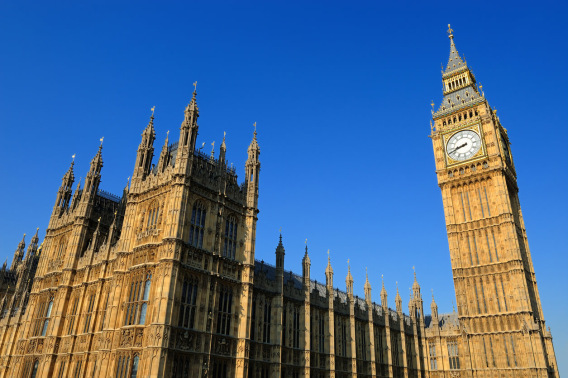UK Parliament, Riddled With Asbestos, Faces Restoration Delays
Asbestos Exposure & BansWritten by Michelle Whitmer | Edited by Walter Pacheco

Lawmakers say that Britain’s Palace of Westminster is at risk of demolition because the iconic and historic structure needs several costly repairs, including asbestos removal.
Nearly 120 workers and other people inside the palace were potentially exposed to asbestos during a 2022 renovation in the speaker’s residential space. In addition to asbestos and its cancer risks, the building is rife with leaks and is crumbling in areas.
Some are worried the entire structure, in which both houses of Parliament meet, is at risk in the event of a catastrophic incident. A report from the House of Commons Public Accounts Committee reveals that dangerous asbestos can be found in at least 2,500 locations in the building.
Asbestos exposure can cause mesothelioma, lung cancer, ovarian cancer, laryngeal cancer and other diseases. According to the House of Commons committee, the building contains such a large amount of asbestos it would take an estimated 300 people working for two and a half years to remove it entirely.
The whole building is also under constant threat of fire. There have been 44 fire incidents in Parliament since 2016. Fires can also spread toxic asbestos fibers into the air, endangering firefighters, people near the blaze and others exposed to particles carried in the wind.
Parliament Plagued by Restoration Delays
Members of Parliament say the building is at an increased risk of destruction after restoration projects were long delayed. Efforts to make repairs have been slow.
Mechanical and electrical systems in the building haven’t been updated since the 1940s. More than 4,000 maintenance issues are reported weekly. Meanwhile, the cost of temporarily patching the building runs about $2.5 million a week.
Committee members blame years of procrastination for the lack of progress. In 2018, lawmakers voted to move out of the Palace of Westminster by the mid-2020s so major repairs could be done. The move never happened, and in 2022, the body overseeing the restoration project was eliminated. Parliament members are expected to vote on a new major restoration project plan this year.
Asbestos Removal Deadline Set
Despite the U.K. banning asbestos in 1999, there are an estimated 1.5 million buildings across the nation that contain some level of asbestos. That includes 300,000 nondomestic buildings.
In 2022, the United Kingdom’s Work and Pensions Committee set a deadline of 40 years to remove all asbestos from public and commercial buildings. The goal is to achieve a “net-zero” level of asbestos in the United Kingdom.
Occupational asbestos exposure remains the No. 1 cause of work-related deaths in the United Kingdom. At least 5,000 workers died from asbestos-related exposure in 2019.
Asbestos in UK Public Buildings
As of April 2023, there were more than 4,500 public buildings that still contained asbestos in some of the most populated cities across the United Kingdom, according to local sources.
The data shows that only 291 of the buildings in question had asbestos removed from them in the past five years. The current speed of the removal process would have to be doubled to meet the recommended deadline for removing asbestos from all buildings within the next 40 years.
A majority of the buildings still containing asbestos are schools, followed by community centers, park and agricultural buildings, offices, libraries and homes.







